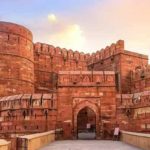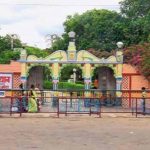National Chambal Gharial Sanctuary, also called the National Chambal Gharial Wildlife Sanctuary, is a 5,400 sq. km tri-state protected area in northern India home to critically endangered gharial (small crocodiles), the red-crowned roof turtle and the endangered Ganges river dolphin. Located on the Chambal River near the tri-point of Rajasthan, Madhya Pradesh and Uttar Pradesh, it was first declared as a PAs in Madhya Pradesh in 1978 and now constitutes a long narrow eco-reserve co-administered by the three states. Within the sanctuary the pristine Chambal River cuts through mazes of ravines and hills with many sandy beaches along its banks.
Deep within the subcontinent lies a land whose many secrets lie still hidden from the human eye in its still largely unexplored terrain. A land is synonymous with harsh terrains and on its breath taking beauty, Chambal. Now uncover the many secrets of the famed land at the National Chambal Gharial Sanctuary. Originating in the Vindhayan ranges in M.P. the Chambal River snakes its way thought the states of M.P. Rajasthan and U.P. before finally meeting the Yamuna in the Etawah district of U.P.
Its rich bio-diversity ensured that it was declared a National Sancturary in 1979 with its total area spanning across the three states of M.P. Rajasthan & U.P. The last bastion for some of the country’s most endangerd wildlife like the Gharial, Muggar, Turtles, Otter and the fresh water Dolphin, the Chambal region also boasts of a wide variety of aquatic and terrestrial bird.
After rampant poaching and fishing almost wiped out the Gharial population from the country in the 70’s, captive breeding and reintroduction programme was started. Chambal was chosen as one of the main areas for reintroduction the species back in to the wild. The Chambal Sanctuary in U.P. covers an area of 635 sq. kms National Chambal Gharial Sanctuary.
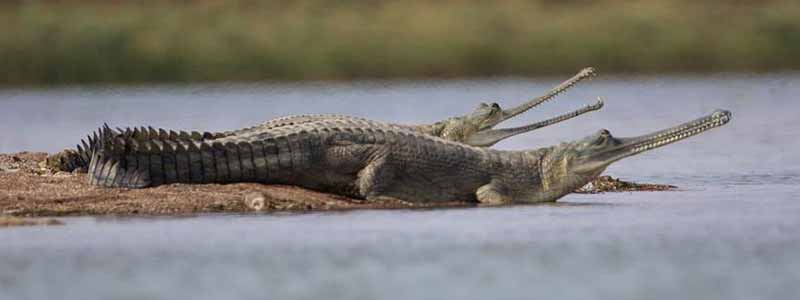
History
Chambal was once infamous for its denizens – the dacoits and bandits; almost every Indian who grew up in the ’70s, ‘80s and ’90s are familiar with these notorious names – Daaku Maan Singh, Phoolan Devi a.k.a. the Bandit Queen, Paan Singh Tomar and many more. The labyrinths of the Chambal ravines and its dry scrub forests gave generations of bandits a safe shelter to play hide and seek with the governmental forces. But the presence of these bandits and dacoits saw the area benefit from an environmental perspective.
Due to their presence, the area has seen no industrial development and the absence of polluting units in the vicinity has essentially contributed to the survival of the National Chambal Gharial Sanctuary and for it to thrive untouched and unpolluted. In fact, today, it is one of India’s most pristine rivers. A 400km stretch of the Chambal river with up to 6km wide ravines on either side, this sanctuary is a tri-state protected area with a total area of 1235 sq. km Rajasthan Budget Tours.
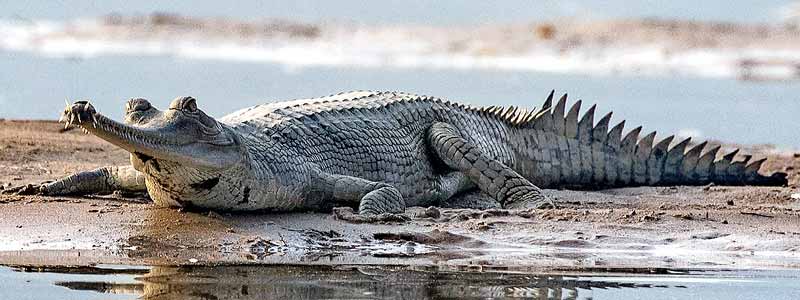
Flora & Fauna
Common plants in the sanctuary include khair (Mimosa catechu/ Acacia catechu), palash(flame of the forest /Buteamonosperma), churel (Indian elm tree), ber (Indian plum/Ziziphusmauritiana) and grassy patches on both sides of the river.
National Chambal Gharial Sanctuary is the main area for the species reintroduction programme of the gharial. Apart from critically endangered gharial, the red-crowned roof turtle and the Ganges river dolphin, other large threatened inhabitants of the sanctuary include smooth-coated otter, mugger crocodile, Indian wolf and striped hyena . Chambal supports 8 of the 26 rare turtle species found in India, including three-striped roof turtle, Indian narrow-headed softshell turtle, and crowned river turtle. Other reptiles that live here are: Indian tent turtle, soft shell turtle, Indian roofed turtle, Indian flapshell turtle and monitor lizard.
Other Mammals include: Hanuman langur, rhesus macaque, golden jackal, common palm civet, Bengal fox, Indian small mongoose, Indian grey mongoose, wild boar, sambar, nilgai, jungle cat, blackbuck, Indian gazelle (chinkara), porcupine, northern palm squirrel, Indian flying fox, Indian hare and hedgehog National Chambal Gharial Sanctuary.
It is also an important bird area with over 320 species of resident and migratory birds reported here. The most popular is the Indian skimmer. Others include Sarus crane, Pallas’s fish eagle, Indian courser, lesser flamingos, pallid harrier, black-bellied terns, ferruginous pochard, red-crested pochard, bar-headed goose, great thick-knee, darters, greater flamingos, and brown hawk owl National Chambal Gharial Sanctuary.
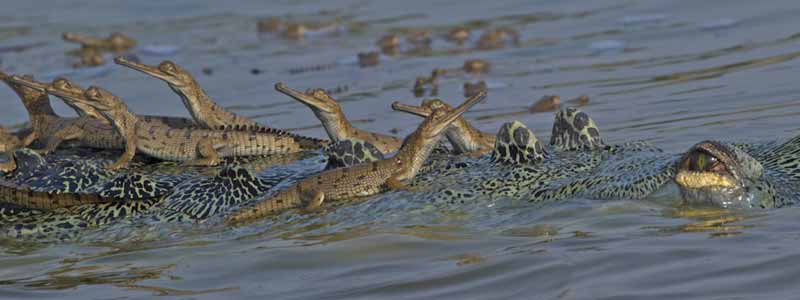
Best Time to Visit Chambal Wildlife Sanctuary
Throughout the year, the place receives different weather conditions. However, the best time to visit the sanctuary is the winter season. As compared to other seasons, it is more relaxing and comfortable go on a wildlife safari in National Chambal Gharial Sanctuary in the winter because of the favourable weather conditions.
How to Reach Chambal Wildlife Sanctuary?
The sanctuary of Chambal can be easily reached by all the means of transport, whether rail, road or air. However, the best way to reach is by railway. Because of the vast rail network, railway proffers better connectivity as compared to the other two means. The airway is also an ideal way to reach National Chambal Gharial Sanctuary for those who are travelling from far destinations and prefer time over money.
By Air: The nearest airport to Chambal Wildlife Sanctuary is Kheria Airport, which is located in the city of Agra. The distance between the airport and the sanctuary is around 140 km, which can be easily covered by 3-4 hours drive. The airport is pretty well connected with all the major cities like Delhi, Mumbai, Chennai and Kolkata through Air India flights. From the airport, one can hire a taxi to reach the sanctuary.
By Rail: Agra Cantonment Railway Station serves as the nearest railhead to Chambal Wildlife Sanctuary which is located at distance of around 157 km. Trains to/from all the major cities of the country like Delhi, Mumbai, Lucknow, Chennai, Kolkata and Chandigarh run operate to/from Agra Cantonment Railway Station. Through its wide rail networks, railway provides impressive connectivity to travellers from any corner of the country. From the station, tourist can hire a taxi or board a bus reach Chambal. The railway is the best way to reach National Chambal Gharial Sanctuary.
By Road: National Chambal Gharial Sanctuary is also accessible via road and national highway networks. Buses from nearby cities and towns ply on a regular basis to Chambal. Besides, one can also prefer a self-drive to reach Chambal Wildlife Sanctuary from neighbouring cities like Delhi and Agra via roads and national highways.

